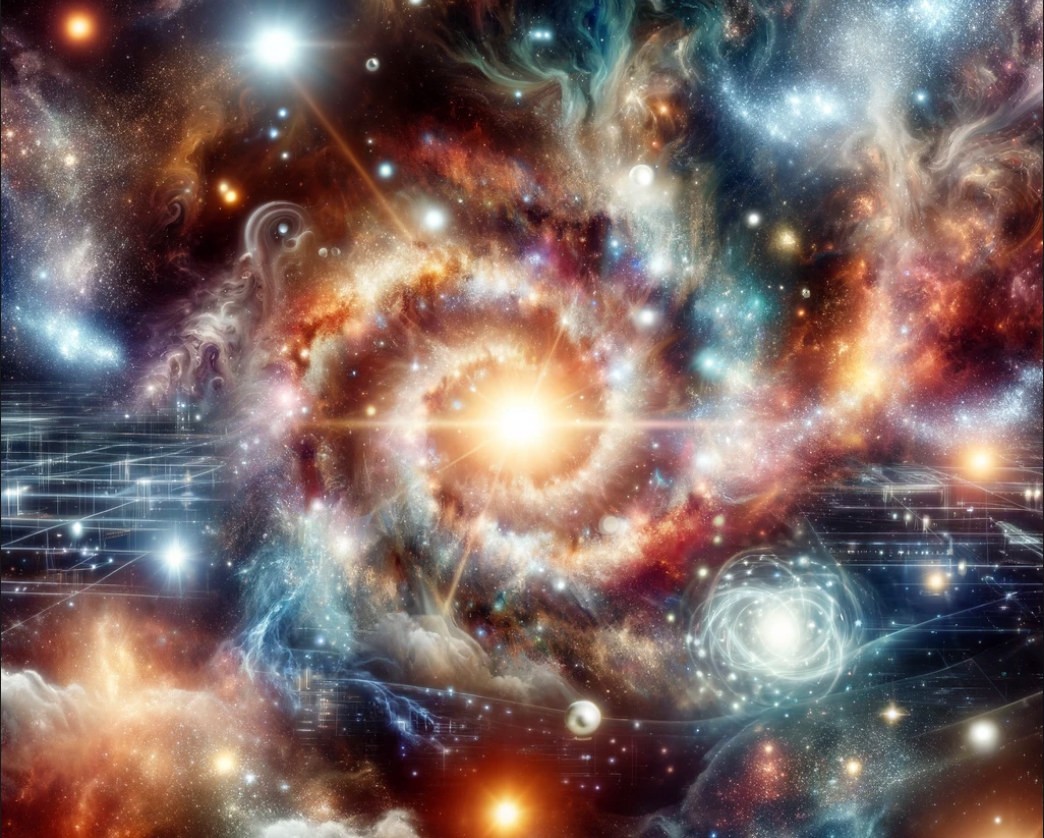The term "billion years" is often used in astronomy to describe time scales associated with the lifecycle of stars, including our Sun. In this context, a billion years is equal to 1,000 million years (1,000,000,000 years). To give a perspective on the Sun's lifecycle in terms of billion years:
天文学中经常使用“十亿年”一词来描述与恒星(包括太阳)生命周期相关的时间尺度。 在这种情况下,十亿年「10億年」等于 1,000 百万年(1,000,000,000 年)。 以十亿年为单位来看待太阳的生命周期:

The image depicting the concept of 'billion years' in a cosmic setting has been generated. It portrays a vibrant and active universe that has evolved over a billion years, featuring luminous galaxies, bright stars, and celestial phenomena like nebulae and supernovae. The composition conveys the dynamic and energetic nature of the universe at this stage, emphasizing the beauty and complexity of cosmic evolution.它描繪了一個充滿活力和活躍的宇宙,已經演化了十億年,以發光的星系、明亮的恆星以及星雲和超新星等天體現象為特色。 構圖傳達了現階段宇宙的動態和充滿活力的本質,強調了宇宙演化的美麗和複雜性。
当前阶段 - 主序星:太阳目前大约有 46 亿岁,正处于其生命的主序星阶段。 预计该阶段将持续约 100 亿年。 在主序阶段,太阳在其核心将氢融合成氦。
红巨星阶段:预计在大约 50 亿年后,太阳核心的氢耗尽后,将进入红巨星阶段。 这个阶段可能会持续大约1到20亿年。 在此期间,太阳将显着膨胀,有可能吞没太阳系的内行星,包括地球。
行星状星云和白矮星阶段:在红巨星阶段之后,太阳将脱落其外层,形成行星状星云。 剩下的核心将变成一颗白矮星,这是一颗致密、炽热的恒星残骸。 这颗白矮星将在数十亿年的时间里逐渐冷却并褪色。
黑矮星阶段:最终,经过数十亿年,白矮星可能会冷却成为黑矮星。 然而,宇宙的年龄还不足以让黑矮星存在。 这是理论上的最后阶段,白矮星已释放出所有能量,不再释放大量的热或光。
太阳的整个生命周期,从形成到成为黑矮星,跨越了数十亿年,说明了恒星演化所涉及的广阔时间尺度。
Current Phase - Main Sequence: The Sun is currently about 4.6 billion years old and is in the main sequence phase of its life. It is expected to remain in this phase for a total of about 10 billion years. During the main sequence phase, the Sun fuses hydrogen into helium in its core.
Red Giant Phase: After exhausting the hydrogen in its core, which is expected in about 5 billion years from now, the Sun will enter the red giant phase. This phase may last for around 1 to 2 billion years. During this time, the Sun will expand significantly, potentially engulfing the inner planets of the solar system, including Earth.
Planetary Nebula and White Dwarf Stage: Following the red giant phase, the Sun will shed its outer layers, forming a planetary nebula. The remaining core will become a white dwarf, which is a dense, hot stellar remnant. This white dwarf will gradually cool and fade over billions of years.
Black Dwarf Stage: Ultimately, after many more billions of years, the white dwarf might cool down to become a black dwarf. However, the universe is not old enough for any black dwarfs to exist yet. This is a theoretical final stage where a white dwarf has emitted all of its energy and no longer emits significant heat or light.
The entire lifecycle of the Sun, from its formation to becoming a black dwarf, spans many billions of years, illustrating the vast time scales involved in stellar evolution.
